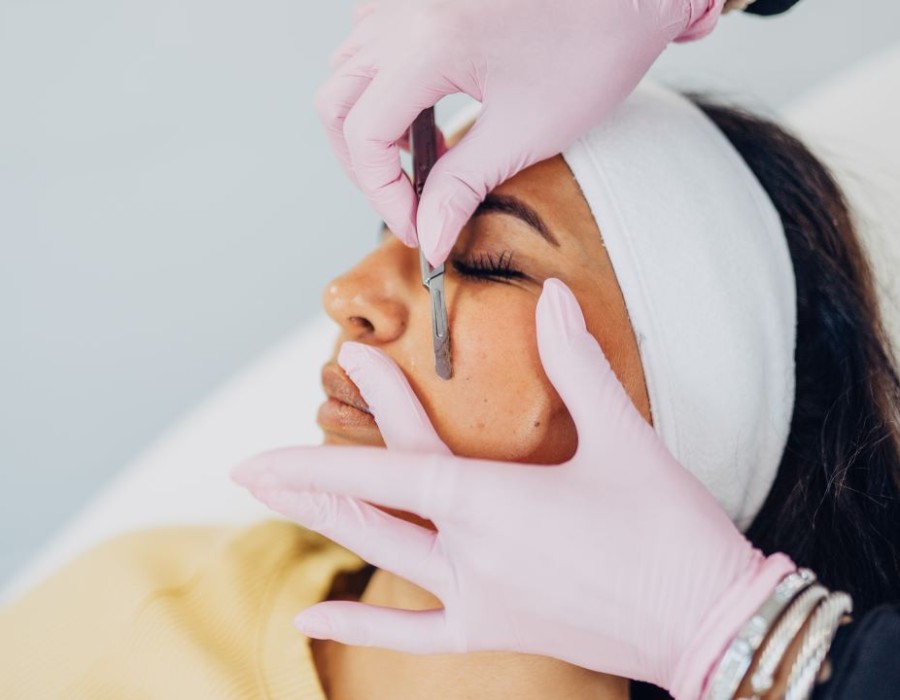In the quest for clear and radiant skin, many individuals explore various skincare treatments to address common concerns such as acne, pigmentation, and signs of aging. One popular and effective method that has gained significant attention is the chemical peel. This dermatological procedure has the potential to rejuvenate the skin by removing its damaged outer layers, revealing a fresher, healthier complexion beneath.
What Are Chemical Peels?
Chemical Peels in Dubai involve the application of a chemical solution to the skin, which promotes exfoliation and ultimately leads to the shedding of dead skin cells. This process can help improve the texture and tone of the skin, making it a favored choice among those looking to enhance their appearance. Chemical peels can be categorized into three main types: superficial, medium, and deep peels.
- Superficial Peels: These use mild acids like alpha hydroxy acid (AHA) to gently exfoliate the skin's surface. They are ideal for individuals with mild skin issues, such as slight discoloration or rough texture. The recovery time is minimal, making them a popular choice for a quick refresh.
- Medium Peels: Utilizing stronger acids such as trichloroacetic acid (TCA), medium peels penetrate deeper into the skin. They are effective for treating more noticeable imperfections, including age spots, fine lines, and moderate acne scars. The recovery period may take a week or two, as the skin needs time to heal.
- Deep Peels: These are the most intensive treatments, often performed with phenol solutions. Deep peels can provide significant improvement for severe sun damage, deep wrinkles, and extensive scarring. However, they require a longer recovery time and should be approached with caution, as they can have more pronounced side effects.
How Do Chemical Peels Work?
The science behind chemical peels is rooted in their ability to accelerate the skin's natural exfoliation process. When the chemical solution is applied, it causes controlled damage to the outer layers of the skin. This prompts the body's healing mechanisms to kick in, leading to the regeneration of new skin cells. As a result, the skin appears smoother, brighter, and more youthful.
The type of peel chosen often depends on individual skin types and concerns. For instance, individuals with oily or acne-prone skin may benefit from salicylic acid peels, which help unclog pores and reduce breakouts. Conversely, those with dry or sensitive skin might find AHAs more suitable, as they provide gentle exfoliation without causing irritation.
The Procedure: What to Expect
Before undergoing a chemical peel, it is essential to have a consultation with a qualified dermatologist. During this appointment, the dermatologist will assess your skin type, discuss your goals, and determine the most appropriate type of peel for your needs. They may also provide pre-peel instructions, such as avoiding sun exposure or certain skincare products.
On the day of the procedure, the skin will be thoroughly cleansed, and the chemical solution will be applied. The duration of the treatment varies depending on the type of peel used, ranging from a few minutes for superficial peels to over an hour for deeper treatments. Patients may experience a mild tingling sensation during the application, which is generally well-tolerated.
After the peel is complete, the skin may appear red and slightly swollen. This is a normal part of the healing process. Your dermatologist will provide post-peel care instructions, which may include moisturizing, sun protection, and avoiding certain products until the skin has healed.
Recovery and Aftercare
Recovery time after a chemical peel depends on the type of peel performed. Superficial peels often require minimal downtime, with most individuals returning to their normal activities the same day. In contrast, medium and deep peels may necessitate a more extended recovery period, during which patients should avoid direct sun exposure and adhere to specific skincare routines.
Aftercare is crucial for achieving optimal results. Patients should keep the skin moisturized and protected from the sun. Using a broad-spectrum sunscreen is vital, as the newly exposed skin is more susceptible to UV damage. Additionally, following any recommendations provided by the dermatologist can enhance the healing process and promote better results.
Results: What to Expect
One of the most rewarding aspects of chemical peels is the noticeable improvement in skin texture and tone following the treatment. Patients often report smoother skin, reduced pigmentation, and a more even complexion. While results can vary depending on the individual and the type of peel performed, many find that their skin appears more vibrant and youthful.
For those with specific concerns like acne or deep scarring, multiple sessions may be recommended to achieve the desired results. Regular maintenance peels can also be beneficial in sustaining healthy skin and addressing any emerging issues.
Conclusion
Chemical peels offer a transformative option for those seeking clearer, healthier skin. With various types available, individuals can choose a treatment that aligns with their skin type and aesthetic goals. Whether you’re looking to refresh your complexion or tackle more significant skin concerns, a chemical peel can be a valuable addition to your skincare routine. Consult with a qualified dermatologist to explore this rejuvenating option and take the first step toward achieving the radiant skin you desire. Clear, healthy skin awaits you!






Comments